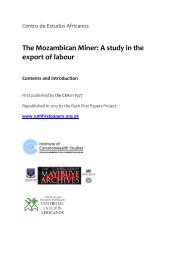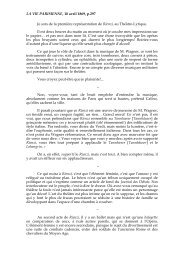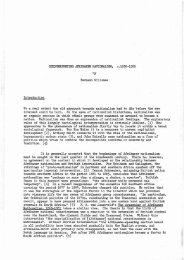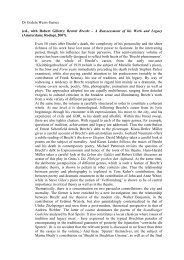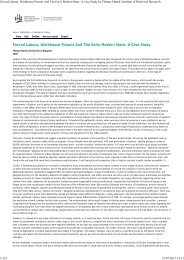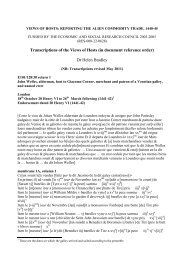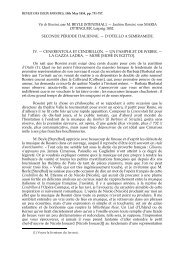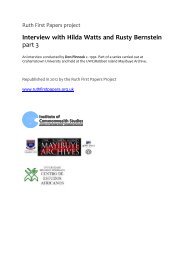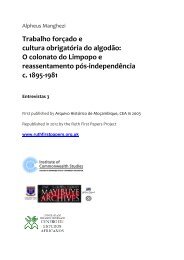Roraima: Brazil's northernmost frontier by John Hemming - SAS-Space
Roraima: Brazil's northernmost frontier by John Hemming - SAS-Space
Roraima: Brazil's northernmost frontier by John Hemming - SAS-Space
You also want an ePaper? Increase the reach of your titles
YUMPU automatically turns print PDFs into web optimized ePapers that Google loves.
eeding. The herds simply roamed free. By the 1920s only a few ranches had<br />
fenced secgdes or retiros where cows could be placed after they gave birth.<br />
The plains were then regarded as common land. Cattle grazed at will, often<br />
sheltering in the shade of palm trees <strong>by</strong> day and grazing at night, when it was<br />
cooler.<br />
Population<br />
The region's first census, in 1883, showed 384 non-Indian settlers, a figure<br />
that included nine Venezuelans and six Portuguese. There were no slaves.<br />
When Coudreau went up the Rio Branco in 1884 he wrote that it was difficult<br />
to imagine how empty the lower river was. Along five hundred kilometres of<br />
river banks he saw only six hamlets of Carib-speaking Paushiana - perhaps<br />
250 Indians in all. The Italian Count Ermanno Stradelli in 1887 described the<br />
lower river as a desert in which there were only four tiny hamlets. And on the<br />
plains above the rapids there were only two or three hundred civilisados or<br />
non-Indians. 26<br />
The situation changed gradually during the next quarter century, although<br />
we have only glimpses of <strong>Roraima</strong>'s population. In 1902 the government of<br />
Amazonas (a state since the proclamation of the Republic in 1889) commissioned<br />
a census of every person living along the Tacutu river, as part of the<br />
Brazilian evidence for the boundary arbitration of the <strong>frontier</strong> with British<br />
Guiana that was about to be judged <strong>by</strong> the King of Italy. This census named<br />
507 people, of whom 320 were Makuxi Indians, 53 were Wapixana or related<br />
Aturiau, 116 were Brazilian settlers, and 8 English. 27 During the twenty<br />
years from 1886 to 1906 the number of ranches in the entire region grew from<br />
80 to 142; but most of these belonged to settlers who were not resident. Very<br />
few non-Indians lived on the land. By 1913 the French engineer Maurice<br />
Mollard reckoned that a thousand whites and three thousand Indians lived<br />
in the open country of the upper river.<br />
At the height of the rubber boom, at the beginning of this century, there<br />
was a brief revival of activity on the lower Rio Branco. This was noted <strong>by</strong><br />
some Belgian Benedictine monks who went up the river in 1909 and <strong>by</strong><br />
Theodor Koch-Griinberg and Maurice Mollard shortly after. The latter said<br />
that the lower river contained some fifty rubber-gathering posts, including<br />
five that could be considered as villages. 28 But the rubber boom collapsed,<br />
destroyed <strong>by</strong> competition from plantation-grown rubber of south-east Asia.<br />
By 1917 Luciano Pereira noted that the lower river was very thinly inhabited,<br />
and its few dwellings were wretched straw huts open to the elements. Four<br />
years later, Gondim said that he felt like an exile going up the empty river,<br />
whose 'banks are in a state of abandon'. 29 The only activity on the hundreds<br />
of kilometres of forested river was extraction of balata rubber and Brazilnuts<br />
and some tobacco growing.



